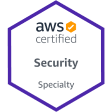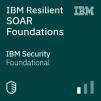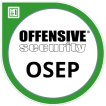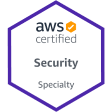Penetration testing
Penetration Testing (abbreviated as Pentest) is a form of assessing the security level of an IT system by simulating an actual attack allowed by the organization. Simply put, the objective of Pentest is to attempt to penetrate the system to identify potential weaknesses that hackers could exploit, thereby proposing measures to eliminate the possibility of future attacks.
Keep missing none of vulnerability
By using Pentest, enterprises can not only assess the level of information security but also detect dangerous vulnerabilities on the system. This helps the IT team improve defenses and reduce damage to the system.
Pentest as a Service
Penetration Testing as a Service (PTaaS) is a delivery platform. It offers more frequent and cost-effective access to penetration tests and a platform that facilitates collaborations between penetration testing service providers and client organizations. Organizations leverage PTaaS to detect and remediate vulnerabilities regularly.
Benefits:
Save time and money
See more: Comparison PTaaS with traditional Pentest
Network Pen Test
Benefits:
The ability to prevent breaches before they can happen
Using the ISECOM’s Open Source Security Testing Methodology Manual (OSSTMM) v3.0 for network and server vulnerability assessment and penetration testing. The network security vulnerability assessment compromise of four phases:
- Planning and Discovery
- Scanning and Penetration Test
- Risk Analysis
- Report
Web Application
Pen Test
Web Application Pen Test
Benefits:
Gain real-world insight into your vulnerabilities; Keep untrusted data separate from commands and queries; Develop strong authentication and session management controls; Improve access control; Discover the most vulnerable route through which an attack can be made; and
Pentest Process:
Using a combination of secure programming guidelines from the Software Engineering Institute (SEI) of Carnegie Mellon University (CMU-USA) and the OWASP Code Review Guide version 2.0.
- Target surveying and information gathering
- Vulnerability scanning by using OWASP Code Review Guide methodology version 2.0
- Verification
- Report
- Re-assessment
Mobile Application
Pen Test
Mobile Application Pen Test
Benefits:
Assess real-world mobile app security vulnerabilities Validate secure design best practices. Ensure strong authentication, authorisation, encryption mechanisms. Find mobile app or device loopholes to avoid data leakage or theft
Pentest Process:
Using a combination of the OWASP Mobile Top 10 methodology), the OWASP Mobile Security Testing Guide (MSTG) version v1.2 and the OWASP API Security Top 10 to assess possible vulnerabilities for customer applications and evaluate the API server that mobile app connects to.
- Target survey and information gathering
- Vulnerability scanning (Black box and grey box only)
- Verification
- Report
- Re-assessment
API Pen Test
Benefits:
Prevent data breaches, identity theft, and other types of attacks. Improve the overall security of your system
Pentest Process:
Using the OWASP API Security Top 10 to assess possible vulnerabilities in API servers.
- Target survey and information gathering
- Vulnerability scanning (Black box and grey box only)
- Verification
- Report
- Re-assessment
Cloud Pen Test
Cloud Penetration Testing is the process of detecting and exploiting security vulnerabilities in your cloud infrastructure by simulating a controlled cyber attack. Cloud pentest is performed under strict guidelines from the cloud service providers like AWS, and GCP.
While penetration testing is the process of performing offensive security tests on a system, service, or network to find security weaknesses in it. So, when it comes to cloud penetration testing, it is just performing a simulated attack on your cloud services to test their security:
- Most Common Cloud Vulnerabilities: Insecure APIs, Server misconfigurations, Weak credentials, Outdated software, Insecure coding practices. Shared Responsibility Model of Cloud Security Testing
- Challenges: Lack of transparency, Resource sharing, Policy restrictions, Cloud service providers (AWS, Azure, GCP)
OT/Scada Pentest
- Identify vulnerabilities and potential threats to your ICS/OT networks before they can be exploited by malicious actors
- Understand the impact of a successful attack on your critical infrastructure
- Gain insight into the effectiveness of your current security measures
- Improve your compliance with industry standards and regulations
- Reconnaissance
- Vulnerability scanning
- Exploitation
- Post-exploitation
- Reporting
Our types

Black box
This is an assessment from the outside in, provided with no information other than what has been made public. This is the most common type of attack.

Grey Box
This will be provided with partial or limited information about the inside of the system

White box
Assessment from the inside out, provided comprehensively: With all information about the system/network such as: Network infrastructure, source code, details of IP address, OS, policy…
The 6 steps of Pentest that we are making with explicitly
The Team
The VSEC team of experts is 100% internationally certified in security, with over 15+ years of experience, they have successfully detected CVEs and research on 0-day vulnerabilities ( unidentified and unaddressed software or hardware vulnerabilities) with a high CVSS score of up to 9.1. This portfolio includes popular software and platforms such as WordPress, Joomla, etc, as well as applications and systems from technology giants like Microsoft, Oracle, etc

















Related Resource
Please fill your information below